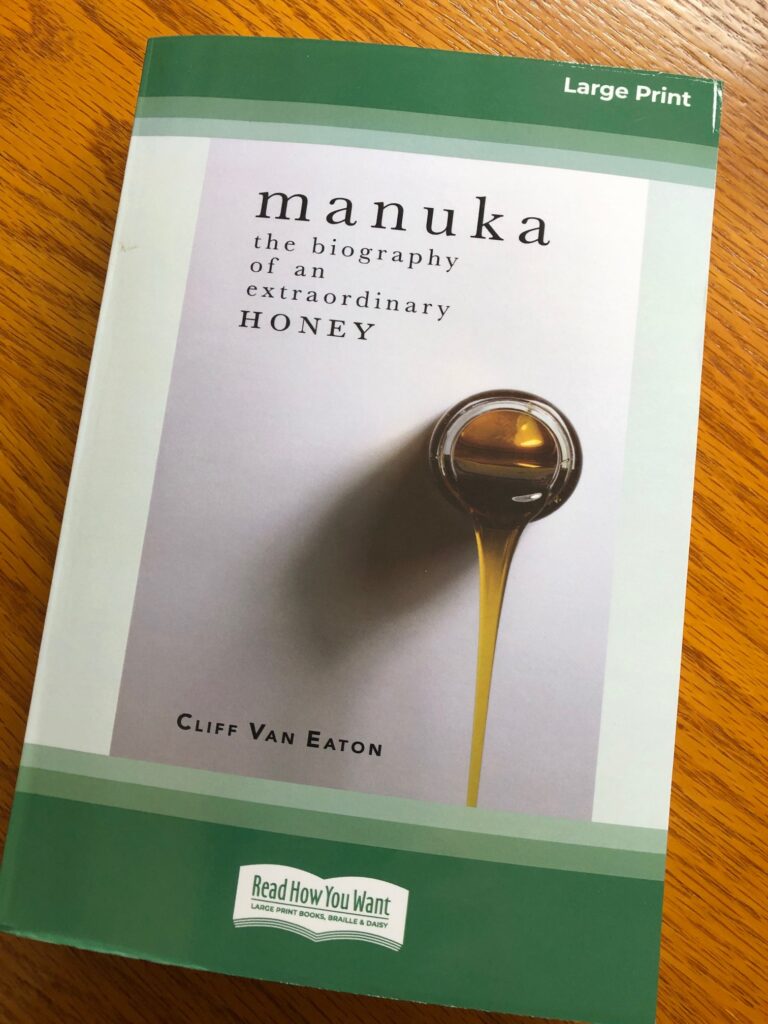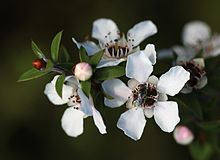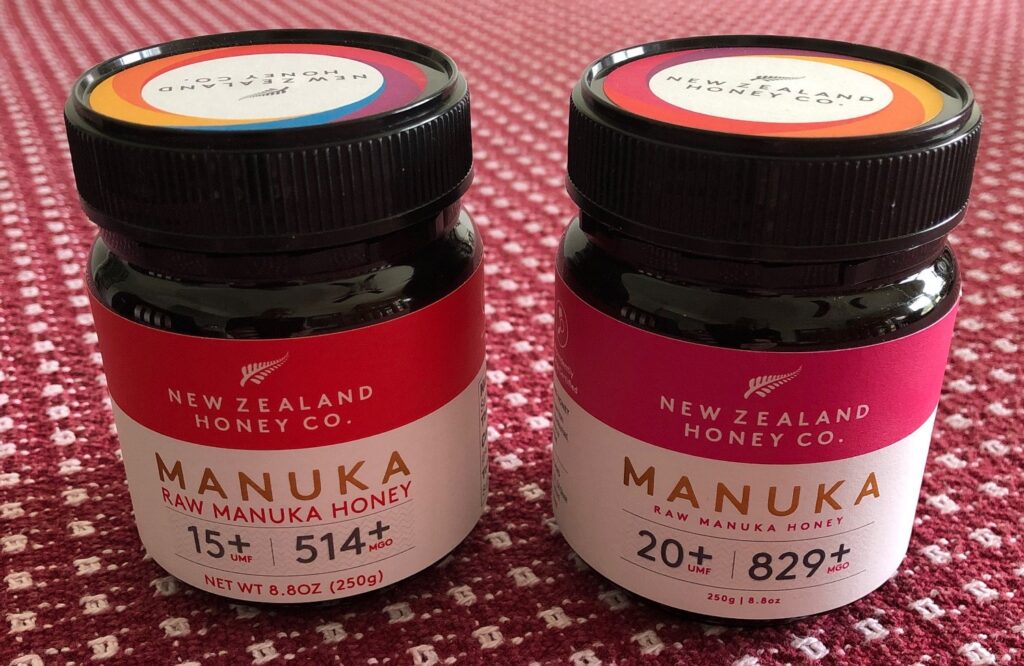Honey is an intriguing ingredient in many skin care products; not just any honey, but Manuka honey. Finding that ingredient mentioned in many of my DIY recipes, from soap to lotion to lip balm, led me to research what was so special about it. While Wikipedia provided a general overview, this book, Manuka: The Biography of an Extraordinary Honey, by Cliff Van Eaton (2014), turned out to be an excellent history of how it was discovered and why it took so long to gain popularity.

Curiously, it was available from Amazon only as a Kindle eBook ($9.99) or as the Large Print Edition ($32.99). I first ordered it as a Kindle book and then quickly realized I wanted to read it more in-depth so I ordered the Large Print Edition too. Large print is a great idea for us old folks!
This book is described in the Introduction:
“It is a rags-to-riches tale of how a most peculiar honey became a ground-breaking medicine, along the way turning into one of the most famous honeys in the world.” (p. vi)
Manuka is a word the Polynesian voyagers, the Maori, gave to a plant they discovered when they first came to New Zealand. The plant grows uncultivated throughout both southeastern Australia and New Zealand and represents almost half the vegetation in New Zealand.

When European missionaries first brought honey bees to New Zealand in the early 1800’s, much of the honey came from the widespread Manuka blossoms. For local consumption that was fine, but when bee keepers tried exporting it to England it was difficult to sell. Buyers wanted the lighter honey from clover and other crops. The Manuka honey was darker and harder to extract from the combs.
Working to process this honey was not worth the effort. Hives were moved closer to the preferred crops of clover, thyme and heather. With so much of the area covered naturally with Manuka bushes it was difficult to control the actions of the bees.
Researching Antibacterial Capabilities of Honey
During the early 1980’s, Peter Molan, a professor of biochemistry at the University of Waikato School of Science, worked on several small research projects experimenting with local honeys to determine their antibacterial capabilities. His experiments grew to include many samples from across New Zealand documenting the sources of honey, including clover, thyme, heather and Manuka.
While the honey produced from the Manuka tree blossoms (leptospermum scoparium) was darker and harder to extract, it was very successful when tested against staphylococcus aureus…a bacteria that was very adept at developing resistance to man-made antibiotics.

By 1991, published research had determined that Manuka honey was an effective antibacterial, even after heating it or diluting it with water. A rating system for Manuka honey sold for therapeutic products was developed, represented by the following: 10+, 15+ and 20+, with 20+ being the highest antibacterial activity.
The resurgence of interest in the medicinal use of honey products prompted the author to review the history of honey in general throughout the ages. Honey’s use in medicine was considered an interesting curiosity. While honey was in common use before WWII for the treatment of wounds and burns, the discovery of Penicillin in 1928 was a game changer. Sugar production worldwide had displaced honey by a factor of 100 to 1, reducing demand. Honey was eventually regarded as just a food item.
Changing Perceptions of Manuka Honey
We now know our challenges with bacteria continue. With the advent of antibiotic-resistant bacteria, especially in wounds and sores that wouldn’t heal, stories about this special honey from New Zealand were of great interest to the medical community.
Research continues to identify the components of Manuka honey and this encourages the medical community to use it for those difficult cases of antibacterial resistance. Several chapters in this book describe the ongoing research with Manuka honey to discover its medicinal qualities.
Transforming the methods of extraction for Manuka honey, and implementing a comprehensive marketing strategy to sell the product are described at length in this book.
Manuka Honey in Skin Care Products
Manuka honey is now being suggested as a healing ingredient in skin care products. Many of the DIY recipes I use call for its use, whether for actual healing or for marketing purposes. (It does still taste delicious on toast!)
The success of the New Zealand marketing efforts can be seen in the current price for a jar of Manuka Honey on Amazon. An 8 oz. jar can range from $38 to $69, depending on its strength (10+, 15+ or 20+).

Incorporating it into a tiny tube of wound dressing (1.5 oz. tube) costs $14.99, which is 80% Active Leptospermum (or Manuka Honey).

Luckily, my skin care recipes usually call for only 1/2 to 1 teaspoon of Manuka honey in a batch of product. It is difficult to incorporate very much into soaps and salves and a little goes a long way. Whether it really works at that concentration is debatable, but it sounds good. I’d say the work of the Manuka Honey Board has been successful!
If you’d like to know more details about Manuka honey and its history, I highly recommend this book!
Please comment or email me directly if you have questions. marykisner@comcast.net. Enjoy!
(Medical Disclaimer: Always consult with your medical professional before using any product on open wounds. Because this is a natural product made by honeybees, DO NOT USE if you have allergies to bee stings or other bee products without consulting your doctor.)
